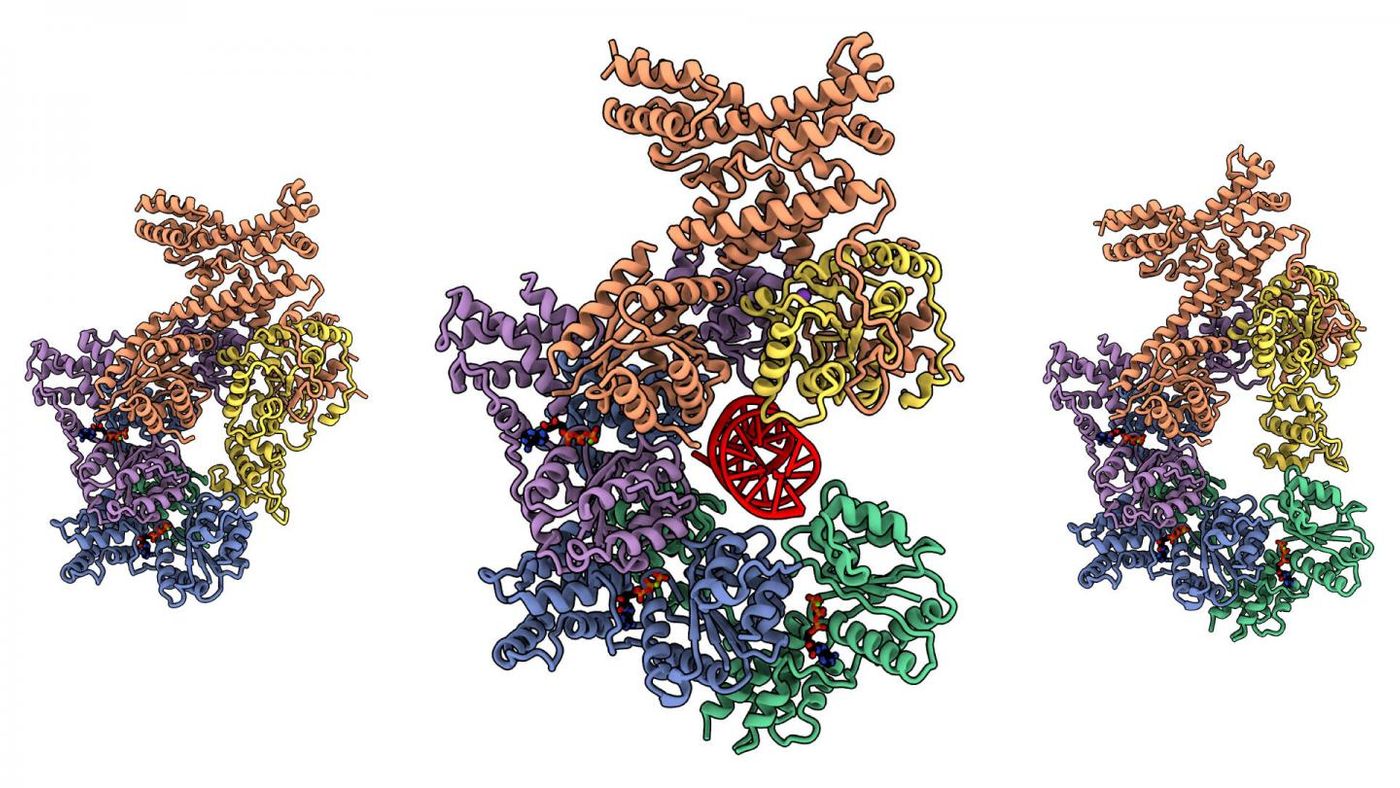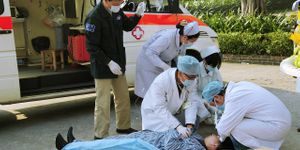Replicating the Genome With a Twist
The genome has to be perfectly copied every time a cell divides, and cells divide constantly, first to grow a developing organism, and then to maintain it; replenishing those cells that are old or dysfunctional. The replication of the genome starts with a set of proteins known as the Origin Recognition Complex (ORC). Dysfunction in the human ORC has been linked to developmental disorders and some types of cancer, so it's important to understand how it functions. Detailed images of the ORC and its dynamic movement around DNA have now been created and reported in eLife.
It's thought that the complex's first piece, ORC1, finds the genomic location where replication is supposed to start, and there, the other subunits of the ORC, 2 through 5, assemble. In the yeast genome, there is one sequence of DNA sprinkled through the genome that spells start, while in humans, it's more complex, and the start site or sites have not been found, yet.
"When the cell has to duplicate, the first thing that has to happen is that the genome has to duplicate. And so the positioning of ORC on these so-called 'start sites' is really the first event that has to happen in order to start the duplication of the genome," said Cold Spring Harbor Laboratory (CSHL) Professor & HHMI Investigator Leemor Joshua-Tor.
"You know, in bacteria, there's usually one start site because it's a small genome, but in larger organisms like humans, in order to be able to replicate such a large genome, what the cell does is uses many, many start sites. And the interesting thing in mammalian systems is that we actually don't understand what a start site really looks like."
The researchers identified ORCs in different organisms and found that they don't have the same shape. They determined that the shapes vary because the ORC has to twist and pinch in significant ways, which depend on what they have to do at any given time. In yeast, the ORC tends to freeze into one stable shape, while it takes on a different stable shape in flies.
CSHL staff scientist Kin On said "the yeast complex is so stable, it is rock solid. But the human ORC assembly is very dynamic."
The team used careful sample preparations, cryo-electron microscopy (cryo-EM), and computational tools to capture the human enzyme complex taking on different shapes. One resembles a fly ORC while at another time it looks like an ORC from yeast. They've also taken the first snapshot of a human ORC as it surrounds a DNA molecule, a critical part of understanding them.
While this may help us learn more about disease and medicine, a greater understanding of basic biology is also still a worthy pursuit.
"How we duplicate our genome is the most basic process of life, right? Really that's what life is all about. So, regardless of how we understand cancer and this developmental syndrome, you know, understanding ourselves and understanding the most basic process, that is part of the human endeavor really to understand ourselves," said Joshua-Tor. "So it's not all about the utility of it...one of the basic endeavors...of humanity is trying to understand life and ourselves. I think it's a big part of why we're doing it. At least a big part of why I'm doing it."
Sources: AAAS/Eurekalert! via Cold Spring Harbor Laboratory, eLife









